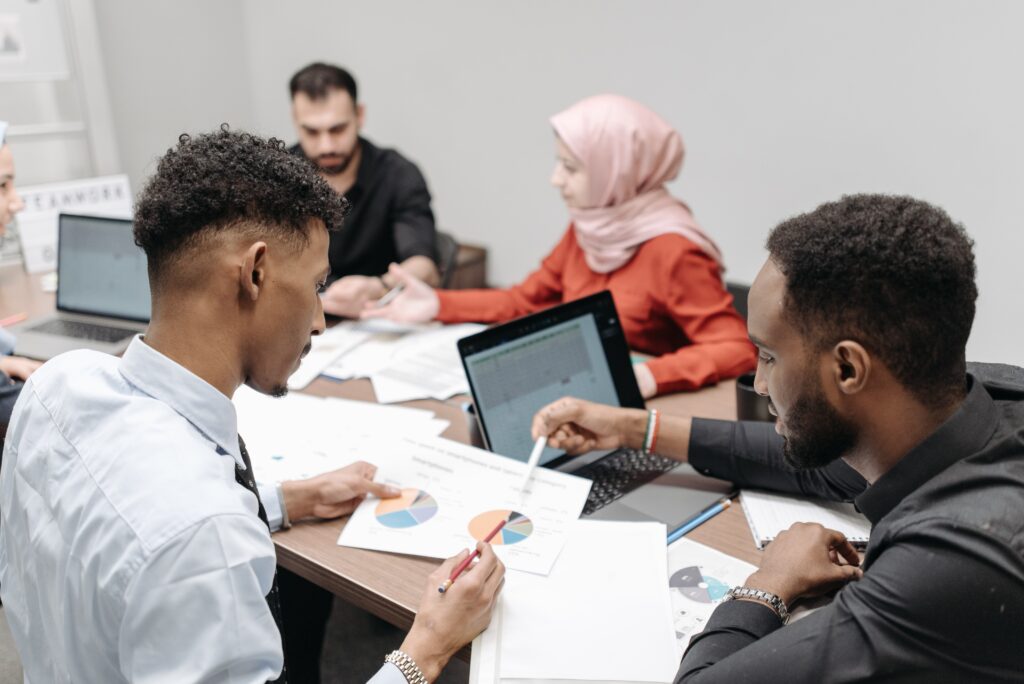Organizing the Gatherings Program
Laying the Groundwork for the Program. In this section we discuss how to create the foundation. This is best done by a few dedicated individuals. New members will be added as the program develops.
Do your research about the community: Know the key stakeholders, local ideologies, cultures, and major businesses. In other words, what is most important to people? Communicate, discuss, and relate on a personal basis with people you meet. And most important: Remember the Prime Directive: Listen Loudly, Speak Softly. When you have several people who want to start the program, and you feel the time is right, contact us using the form below. We are always looking for more communities that can use our help.
Our Site Selection Committee reviews each suggestion, will contact you for more information and make its recommendation to the Executive Program Director. The Director may want to speak with local community leaders or school administrators to better understand the opportunity. We will make our decision and let you know.
This is a list of Branch Leadership. Summaries of their responsibilities are shown below.
- Branch Program Manager
- Branch Treasurer
- Branch Secretary
- The Branch Volunteer Coordinator
- Community Services and Projects Administrator
- Team Leaders
To begin, the Branch’s Program Manager needs to be selected. The PM is one of the most important positions because everything flows from the top, and because of its importance needs to be approved by the Executive Program Director. Usually, the person contacting National about establishing a Branch Location becomes the Program Manager. People interested in the position should contact The Executive Program Manager. The PM will seek people who want to participate and would like to have positions and must decide which person is best suited for the position they would like. Committees are important and since each community is unique, the committees will vary, and new positions may be created to accommodate each situation. These are guidelines and a place to start. Remember New Beginnings is there to support you and we will continue to be involved during the life of each program.
The Local Branch needs a name, stating the town or city and beginning with “New Beginnings” to show your connection to the organization. The state should be included because there might be cities or towns with the same name in different states. As an example, New Beginnings of Danbury, Connecticut or New Beginnings of Danbury, CT. In cases where the population is small or does not contain very many schools, we suggest you use a regional name, such as New Beginnings of Shelby County, Indiana or New Beginnings of Shelby, IA.
Branch ID: The Branch is assigned an ID by the Executive Program Director and is used for record-keeping purposes. It contains: the two-digit state code which is the post office code and and Individual three-digit School Code.
Meet with school administrators, business, and community leaders to determine who is interested in joining, or supporting the organization. Begin to imagine how everyone will work together. When communicating make sure your message is relevant to your audience. Think about what the most critical needs to their community are, and how we can help. Occasionally it helps to remind members that we are there to help them, and we need their thoughts and participation to be successful.
While the new members are getting organized, they can begin to establish lines of communication with business and religious leaders. Remember we can’t move forward without their guidance and advice. We hope many of them will want to become active in the organization.

It all starts with Members: Members/Volunteers who work together for the benefit of their communities are the organization. They are us. We need to remember how amazing these people are, who give of themselves and bring hope in these difficult times. Always let them know how appreciated they are, and think of ways to show your gratitude. If someone wishes to join, we ask that a simple application form be submitted, which will be reviewed by the local Program Manager.
Explain Why: During your first meeting with potential members and students be sure to tell them why our programs are important, and discuss the Mission. Why they are needed in their community, and this requires that you first understand their problems or difficulties. Having conversations with community leaders will give them a clear vision of what things need attention. By understanding what the problems are, you can better explain how we can help, and that will motivate people to join.
The Branch Organization:
- Even though most of the activities will be outside the classroom the school principal needs to be involved (to the extent they want to be) and be appraised of our progress. The principal knows the inner workings of their community and can offer valuable guidance.
- After the positions and committees are staffed, during the next few weeks, under the direction of the Program Manager, a written plan will be developed that details the goals and responsibilities for each school administrator, teacher, and committee member. During this time, the Program Manager will hold Orientation meetings to insure each person understands the programs they are involved in. It is expected that is the amount of time necessary to make sure everyone knows what is expected from them.
- Keep in mind that each location is different, and a unique program will take time to develop. Do not rush before you are ready. It is important that all members and interested parties understand their role and are working in unison. The Program Manger will arrange for each National Committee to work with the local committees and establish a strong working relationship.
- Next is to enroll parents to work on the committees, along with other members of the community. For instance, we need enough people on the Communications and Transportation Committees to provide support for the activities. If there is a Police Athletic League in the area, that is a great place to find committee members.
Establishing lines of communication between National and each Community is the responsibility of the Executive Program Director and Program Manager. Communities need guidance from National at the inception and on a continuing basis to ensure the success with our programs. By continuing the relationship, the knowledge and experience gained by each program can be incorporated into the Guide to the Collective Experience. On the local level, it is important for all members to work towards the same goals, and the guide is the best tool to ensure that will happen. When first starting, make use of the New Beginnings web portal for media postings, as well as our Facebook Page. It is up to each community to determine if they will benefit from their own social media account.

Communicating Information is vital to any organization. The better the communication the stronger the organization. And as Neuman would say,
“Information is Power!”
The Power to Make a Difference.
The Branch Program Manager (PM):
Oversees every aspect of the Branch. They are responsible for initiating each program and tracking its progress. Making sure each member is happy, motivated, and performing their job responsibly. As funds become available this may become a paid position. The Program Manager oversees:
- Approves each new member and assigns them a position in the organization.
- Establishing each committee and administrative positions.
- Reports to the Executive Program Director on the status of the Local Branch, usually quarterly.
- Establishes relationships with school administrators and interested politicians.
- Works with the Financial Administrator to create an annual budget, which is presented to the Executive Program Manager for approval, at a time specified by the EPM.
- Oversees all financial transactions and fund-raising activities.
- Arranges for new members and Committees to attend Orientation Sessions, through the Local Committee.
- Makes sure that any required Insurance that is required for each program is kept up to date.
- Approves all Collective Experience Activities.
- Attend the monthly Committee meetings and report the status of each program.
- Intervenes and resolves all disputes between the organization and the community, and between members and administrators. This is where good negotiating skills are important.
- Submitting Quarterly Progress Reports to the School Board (if appropriate).
- Advising the School Principal and if necessary, advising the ADR-NB Board of Governors of any serious problems concerning the organization, members, teachers, or students.
- Managing the Awards and Certificates process, making the final decisions as who will receive the honor, and making sure the Secretary produces the trophies and certificates when required. The Director will set the dates for each segment of the process.
As you can see the Program Manager is the key person, but they cannot do this alone, and as the need arrises additional positions will be required. This is up to the members and will become self evident, so don’t feel the need to fill all positions immediately.
The Branch Treasurer: if the branch grows large enough it will need someone to manage, budget and report the finances. The treasure is responsible for the banking, bookkeeping and record keeping. Looks for funding for the branch and reports the efforts to National. Reports monthly to the National CFO various financial reports and keeps the Program Manager up to date with the latest monetary information.
The Branch Secretary: is responsible for all record keeping, updating files, and licenses as required and, other applications required to conduct business by the federal, state and local agencies. Obtain and maintain all insurance coverage (if required). Take notes at each monthly committee meeting and assist the Program Manager in running the organization. The position is for one year, starting with the school year and is appointed by and reports to the Local Branch Program Manager.
The Branch Volunteer Coordinator: As the branch grows there will be a need for a Coordinator, who is responsible for recruiting and managing volunteers. This may involve creating volunteer positions, assessing individuals’ skills to match them with the appropriate opportunity or program; developing a training plan to ensure that people are qualified before they work on behalf of the organization. Make sure our volunteers comply with our program guidelines and behave in a responsible manner.
Helpful skills: Experience in recruitment (such as at a college admissions office); Strong people and communication skills; experience facilitating training for a group of people.


Community Services and Projects Administrator: Each Branch Program Manager needs a person who knows the community, the culture and social make-up, who can help lead the establishment of the Branch Location. This person may not want to have a specific position, nor very many responsibilities, but can be invaluable for establishing and maintaining relationships with community leaders, interested political leaders and school administrators. The Administrator should be able to organize the first Gatherings activities and find people to be Team Leaders. They can help establish a relationship with law enforcement, including the PAL and with the police community liaison, if they is one. On an ongoing the Administrator can be responsible for ensuring the results of each program are reported to the National Program Review Committee. Reports to the Branch Program Manager.
We disucss Teamwork in depth in the Teamwork and Communication Section, link found below
Why is Teamwork Important?
From an article by Atlassian as shown in the Teamwork section. Research shows that collaborative problem solving leads to better outcomes. People are more likely to take calculated risks that lead to innovation if they have the support of a team behind them. Working in a team encourages personal growth, increases job satisfaction, and reduces stress. Jan 25, 2022
Branch Fund-Raising: The National Organization will provide some initial funding to establish each Branch Location. It would be a wonderful surprise if all the money needed to support our programs was available in the school or community budgets but that is unlikely. It is up to each Branch to provide most of the money. The National Fund-Raising Director and Committee will work with Branch members to plan fund-raising activities and events. Sometimes a local donor will be happy to sponsor an event or program.
The Importance of Police Engagement:
We ave dicussed the necessity of strengthening the relationship between community and law enforcement. Gatherings is teh best way to address this goal. In addition, police activity members are already experienced in group activities, and they make the idea partners. Each gathering event should have at least one police officer as a supervisor.
Team Leaders:
These are the supervisors on the Gatherings activities. They will be part of the planning and management of the event from beginning to end. You volunteered to be a Team Leader and unless you are experienced in this role it might be a little daunting. This is an important aspect of the program, and you want to contribute the best you can, so here are some ideas that will help you be a better supervisor and enjoy yourself as well.
You might know some of the students and other Team Leaders at a Gathering event, but not too well. To start, do your homework. Find out about where you are going and think about what the students might like about it. Are there educational aspects you feel are important and should be discussed during the event? Speak with other leaders, introduce yourself to people you don’t know and discuss how the event will be organized. If you live nearby, take a few minutes, and visit so you are familiar with the location and management. Think about some specific goals you would like to accomplish, like making friends with three students and one other Team Leader or meeting other parents to socialize with. Maybe your child and some of their friends are going. This gives you a good opportunity to get to know their friends a little better.
Local Committees:
Committees are the backbone of the organization, as they are involved from the beginning to the end of each program. Committee leaders need to have a strong sense of community, to be charismatic and unafraid to start things rolling. The Program Manager will determine if there is a need for each suggested committee and when they will be needed. To start, only one or two committees will be necessary. When committees are formed, they should be staffed with a diverse group of qualified individuals, with the appropriate skill sets because they are the “in house experts” to lead the organization, and for other members to consult with. Committees are also the “action” arm of the organization; members should be made up of local community leaders, Organization Administrators, teachers, parents, and students.
Local Committees
- Committee members are appointed by the Program Manager and serve a two-year term, beginning with the school year. If a position becomes vacant during the school year, the PM will appoint an individual to serve the remaining time.
- Committees strengthen lines of communication within the organization of information, and with assisting the leadership in the decision-making process by providing needed information
- Committee Chairpersons are selected by a simple majority of the Committee and then submitted to the Executive Committee for approval, which requires a simple majority vote.
- Each Committee is responsible for keeping records of all meetings and sending copies to the Program Manager and the Program Secretary.
- Committee meetings should be run according to Roberts Rules of Order.

TIP: If the meeting is running overtime, take a break and do a little stretching.

Local Committees are the Backbone of the Branch Organization
Committee Chairpersons:
Are selected by the Committee with a simple majority, to serve a two-year term, beginning with the school year. They will be the “recruiting” person for their committee, which means good communication skills are very important. The Chair should have solid leadership abilities, and strong relationships within the community. The Chair reports to and works closely with the Program Manager.
Committee Secretaries:
The secretary is appointed by the Chairperson of the Committee at the start of the first meeting each year, to serve a one-year term. The Secretary will record all pertinent actions discussed during each meeting and distribute the minutes of the meeting to all relevant people (as determined by the Program Manager). If no Secretary has been selected, the Chair will appoint a temporary Secretary for that meeting.
Partners, Sponsors and Supporters
While we require funding to support our programs, we also need Corporations and Individuals who strongly believe in our Mission and want to be involved with our programs, by offering their time and expertise. As recognition of their contributions, we designate them as Partners or Sponsors. We acknowledge the foremost by listing them on our web site, and sometimes hold luncheons or dinners in their honor. Partners and Sponsors usually have a high profile in the community, contribute financially to the organization and represent the organization at public events. They may sit on a committee or advisory board, offering their guidance and experience, and furthering our success.
Partners: Foundations and Organizations that actively collaborate with New Beginnings, who share a passion and commitment to bring Understanding and Acceptance to all people. They are tireless in their support, lend guidance and actively participate in our activities; without their efforts we would not be successful. We acknowledge their importance by listing them on our letterhead and web site.
Supporter: a person who is actively interested in our organization and spends time helping us achieve our goals, by participating in our programs or speaking on our behalf at various events. They usually will not hold a specific position but can be counted on for assistance when called upon.
Sponsors: are individuals or organizations that prefer to show their support by funding a specific activity or event. And then there are sponsors and there are other sponsors. Some sponsors want to participate in the event or activity they financially support, while others will want to lend financial support and be happy to have their name listed as the sponsor. There are many opportunities in each Platform to choose from; the Program Manager can create more choices specific to each community.
There are many opportunities in each Platform to choose from; the Program Manager can create more choices specific to each. Some suggestions that may interest a sponsor are organization publications, web site maintenance, luncheons or gatherings that further our mission, fund raising events, support the Biography Catalog Software and Maintenance and sponsor an exchange student. In each case we will show the name of the supporter in the appropriate location.
Planning How to Start The Gatherings Program
Every program needs a solid plan before beginning, and we are no different. The next step is short and contains commonsense thoughts and tips to insure we are successful.

